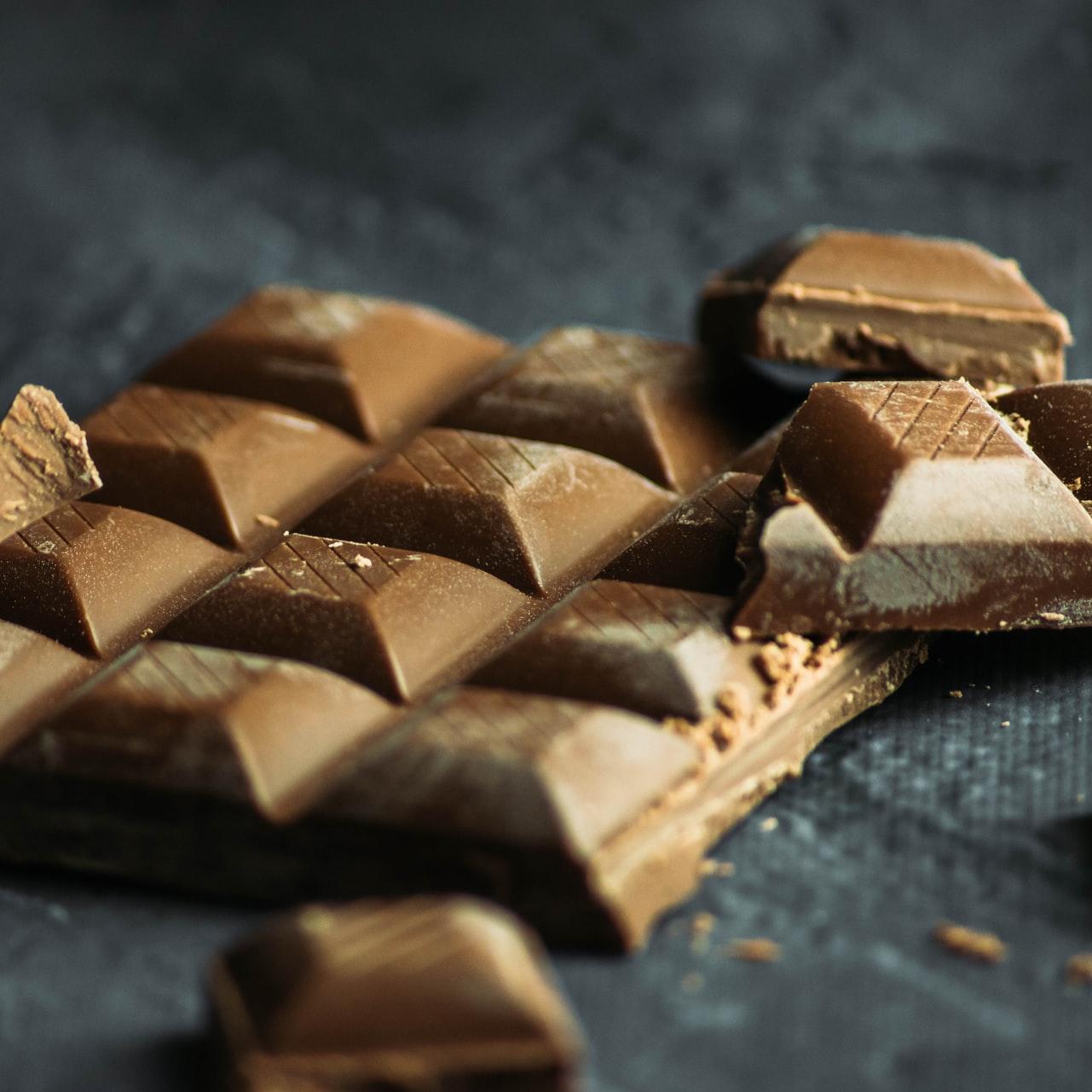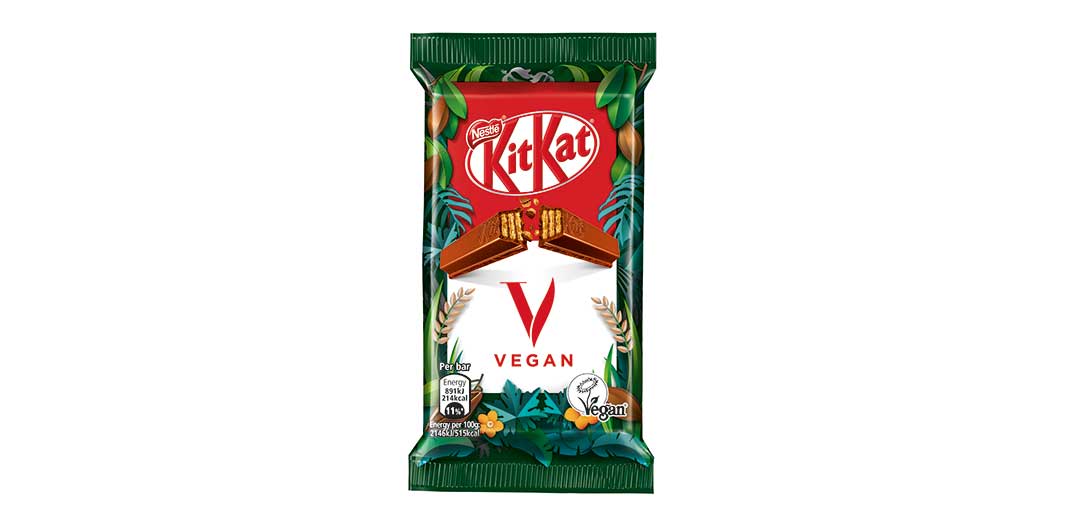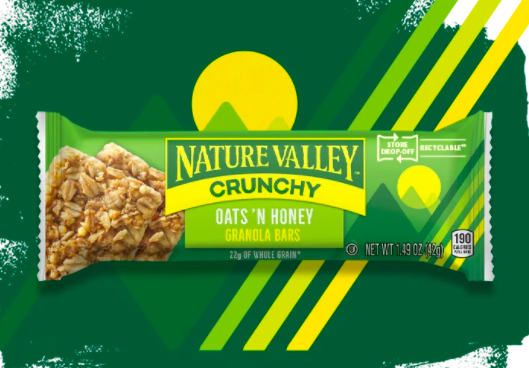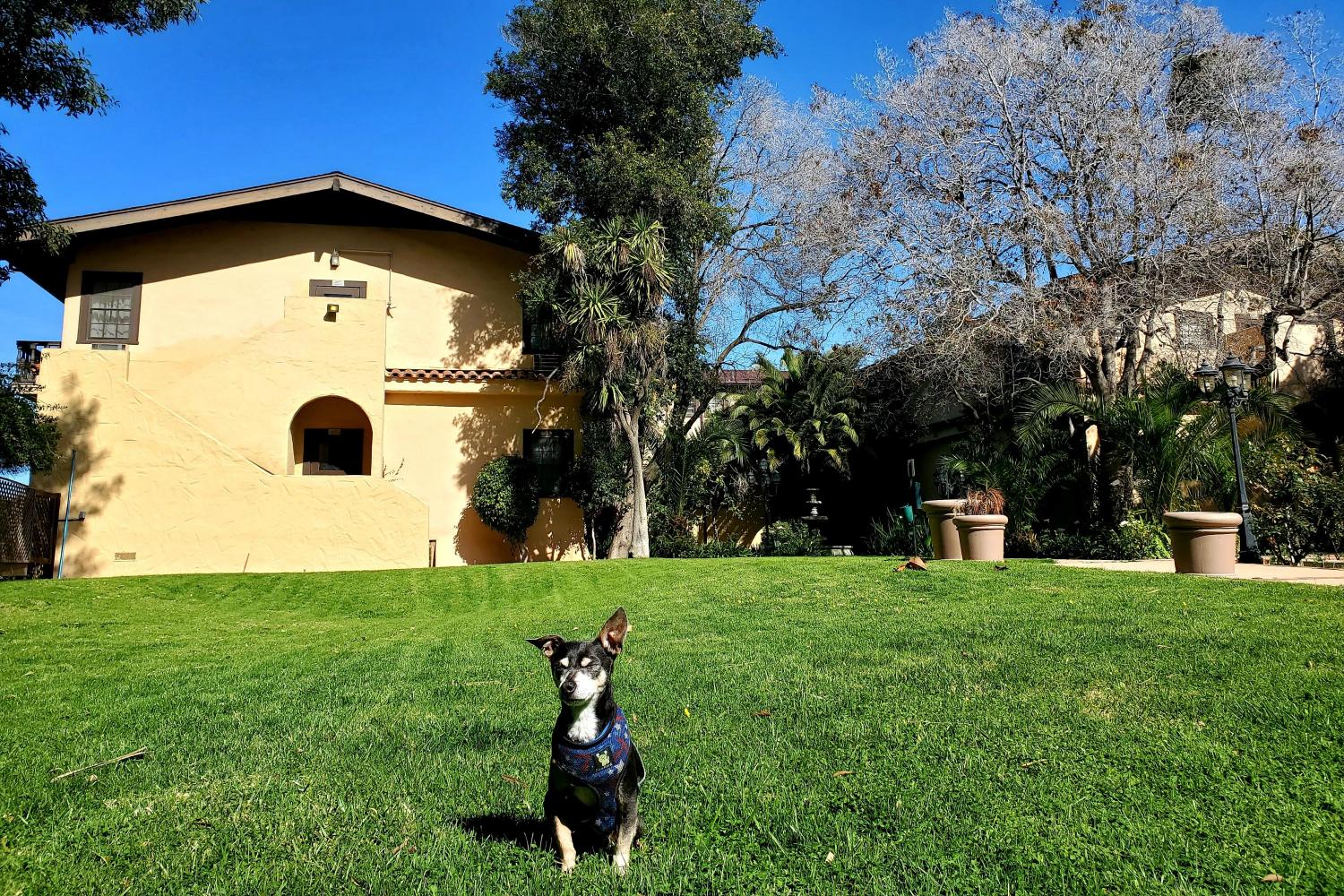The Black Dollar Index is Holding Companies Accountable on Racial Justice


In the wake of last summer’s social unrest after the murders of Ahmaud Arbery, Breonna Taylor and George Floyd, Black Americans witnessed a tidal wave of public statements of support and “we stand with” pledges from corporations that previously were never experienced. Nevertheless, much of corporate America still hasn’t matched their words with deeds. To that end, the recent launch of the Black Dollar Index offers consumers and investors a platform by which they can gauge companies’ commitments to economic and social justice and hold them accountable.
As corporations began to pledge their support, it became imperative to create a platform for consumers to hold corporations accountable and seek transparency on these commitments moving forward.
According to Kelle Rozell, the founder of the Black Dollar Initiative, this tool is a start to ensure that the change oft-promised last summer comes to fruition. From Rozell’s point of view, it’s all about having that ongoing honest conversation with U.S. corporations and their leaders.
“In most cases, transparency is the first step. Some companies could quickly increase their score by simply being transparent about their workforce data,”she said during an email exchange with TriplePundit. “From there we would seek out the opportunities in the blind spots, i.e., ‘your workforce looks great, but you haven't committed to Supplier Diversity,’ or ‘you really need to focus on hiring more Black executive level candidates.’”
So far, the conversations with companies appearing on the list have been constructive. When 3p asked if there has been any criticism or challenges about the rankings, Rozell replied, “[There was] no pushback, but we have had healthy dialogue to break down how we got to the score and opportunities to be better. A lot of these companies are just beginning with their roadmaps for diversity, so they know there is work to do, but want to share steps that they are actively taking. I think we will see a lot of growth a year from now.”
So far, Black Dollar Index researchers have evaluated the performance of more than 100 companies in the Fortune 1,000. To arrive at a company's rating, 80 percent of the companies’ scores are tied to quantitative data, based on such factors as the percentage of Black citizens working within the companies ranks, from individual contributors to the C-suite. As for the rest of the score, it’s qualitative, but straightforward: A yes or no on known negative race-related claims, investments in Black initiatives and if a supplier diversity initiative exists are among those data sets.
Some would argue that whether a company is truly an “ally” of Black America, or not, is a matter of perception. But resources like the Black Dollar Index help put such arguments to rest and allow consumers and investors to make up their minds about their purchasing and investment decisions based on consistent lineup of facts.
"We believe that the Black Dollar Index is an accountability tool towards real infrastructural change. Corporations play a huge part in the overall economy, policy making, and development of local communities,”added Rozell. “If we can use our dollar and cultural currency to affect their bottomline and in turn shift their priorities in how they hire us and give back, we could see real change for Black America in years to come."
The Texas Energy Crisis Brings Environmental Justice Issues Home


Photo: A car drives along a Dallas street during a February ice storm that has brought up many questions about the Lone Star State’s approach toward environmental justice, climate action and energy regulation.
While millions of Texas residents were still locked in a deep freeze without electricity or heat last week, fossil fuel stakeholders leaped to place the blame on the state’s renewable energy sector. The accusation was quickly debunked, but the entire back-and-forth missed the point: Regardless of the source, energy is a matter of community safety, public health and a reliable environment in which to do business. Energy is also deeply entwined in matters of environmental justice, and the experiences of last week underscore the high cost of injustice for all, businesses and residents alike.
The Texas energy paradox
According to the most recent report from the U.S. Energy Information Agency, Texas is by far the single largest energy producing state in the country, accounting for more than 20 percent of the nation’s total output.
That simple fact suggests that Texas would be the least likely state in the nation to suffer through a far-ranging energy disruption that impacted millions for days on end.
However, the Texas energy crisis of 2021 is not a one-off. The state has suffered through a string of weather-related energy supply disruptions in recent years, including heat waves, a major cold snap in 2011, and a long string of tropical storms and hurricanes.
To the extent that the latest series of weather events is a symptom of climate change, the current state of the Texas energy infrastructure is a harbinger of things to come: unstable, unreliable, and incapable of meeting the challenges of a warming planet or the need to confront environmental justice.
The free market fails on resiliency
Fortunately, most parts of the U.S. are better prepared for extreme weather events. The emerging consensus among energy experts is that Texas’s unique, deregulated energy market has raised the risk of widespread disruption, because it discourages long-term investment in weather proofing.
One leading example is the state’s sprawling natural gas infrastructure. It provides for the bulk of Texas’s electricity generation as well as a good deal of residential heating. The state’s refineries, petrochemical plants and other industrial facilities also rely heavily on natural gas.
“Officials for the Electric Reliability Council of Texas, which manages most of Texas's grid, said the primary cause of the outages Tuesday appeared to be the state’s natural gas providers,” the Texas Tribune reported last week. “Many are not designed to withstand such low temperatures on equipment or during production.”
“By some estimates, nearly half of the state’s natural gas production has screeched to a halt due to the extremely low temperatures, while freezing components at natural gas-fired power plants have forced some operators to shut down,” the report continued.

Although fossil fuel stakeholders were quick to blame wind turbines, they simply proved the overall point. Wind turbines function normally in cold weather all over the world, except in Texas, where developers failed to weatherize systems even after the cold snap of 2011 demonstrated the need.
As a deregulated market outside of the authority of the Federal Energy Regulatory Commission (FERC), Texas is also cut off from grid mutual aid systems. In other parts of the U.S., grid operators can count on regional assistance when power stations and other infrastructure go down. Texas was left to deal with the crisis on its own, for reasons of its own making.
The free market fails on reliability and public health
As of this writing the impact on public health is yet to be measured in numbers, but the images of human suffering have circled the globe. Some observers are also warning of a ripple effect on the business community.
Last week Texas Tribune analyst Ross Ramsey wrote that the energy crisis “could leave a lasting bruise on the Texas exceptionalism political and business leaders like to brag about,” undoing “years of economic development promotion, corporate relocation work and tourism campaigns.”
“Low energy prices attract business, and Texas has made a name for itself as a fast-growth, pro-business state,” Ramsey noted, but the 2021 energy crisis stripped the veneer off the rosy picture and exposed the high level of risk involved in deregulation.
“Who wants to go to a failed state? Sure, there is no income tax. But we're rationing gas, turning off electricity for millions of households and boiling water so it doesn't poison us,” Ramsey observed.
As Ramsey pointed out, the deregulated Texas energy market favors refineries, petrochemical plants and other top industrial users in the state. These facilities can curtail operations in a weather emergency to avoid the energy price spikes that the deregulated Texas market allows. Many commercial users cannot do the same. Residential users are especially vulnerable because they demand more energy during heat waves and cold snaps, which are the very conditions that raise the risk of price spikes.
Texas at the crossroads: renewable energy, environmental justice and community resilience
The odds are that few, if any, lessons will be learned from the Texas energy crisis of 2021. After all, the 2011 cold snap was supposed to be a wakeup call for state legislators to fix the system, and they did not.
However, back in 2011 the renewable energy sector was not as competitive as it is today. If the Republican-led state government fails to take action, business leaders in Texas can seek other means of supporting new, weather-hardened renewable energy facilities that address both environmental justice and resiliency issues.
One area to watch is the popularization of microgrids alongside the growth of the community solar field, which focuses on local, resilient energy production.
Another potential area of progress is the rural electric co-operative field. Rural co-operatives are pivoting to renewable energy and resilience, and their community benefit mission supports investment in hardening energy infrastructure against weather emergencies.
The U.S. Department of Energy continued to promote growth in both of these areas during the Trump administration, despite the former president’s aim of supporting fossil energy. In all likelihood, the agency will redouble its efforts during the Biden administration, given the current president’s focus on environmental justice.
The strongest impact of President Biden’s environmental justice focus will likely be felt outside of Texas, where the FERC holds authority. If the community and economic benefits become apparent, that would provide Texas business leaders with support to lobby in favor of similar policies in their home state.
In addition, the Energy Department supports significant renewable energy demonstration projects and other clean tech R&D ventures in Texas, vehicle electrification and green hydrogen being two recent examples.
Warning signs of unsustainable growth and Texas’s fossil energy infrastructure were building long before the most recent crisis, especially regarding the impacts of oil and gas fracking and the disposal of fracking wastewater.
Texas has a major advantage over many other states because it has both wind and solar resources in abundance. During the Obama it won acclaim as a wind energy leader in the run-up to the signing of the Paris Agreement on climate change in 2015.
Now that the Biden administration has rejoined the Paris Agreement, business leaders in Texas have a chance to burnish the state’s reputation again, regardless of another failure to act by Republican leadership in the state legislature.
Image credit: Matthew T. Rader/Wiki Commons
Black Influencers Push Back Against Working for Free


No one should have to work for free, but some are asked to do it more often than others. One thing even the most clueless among us should have learned over the past year is that people of color are sick of spending extra time educating people on how to treat each other with respect and dignity in the workplace, often with no compensation. Now, count in Black influencers as the latest group of people to push back against working for free.
Swag still isn’t compensation
The story about Pink Lily, an online women’s clothing boutique, is a textbook case. As Buzzfeed’s Stephanie McNeal reported this week, one influencer became rightfully miffed when she was ready to work with the online retailer — only to be told that she wouldn’t be paid directly for any content as she was below a certain threshold of followers.
Instead, she was promised free products, “exposure” and a link to earn a commission on anything her followers might buy should they swipe up on an Instagram story. The promise is not all that different from multilevel marketing companies like Amway, Avon or Herbalife: Just tell your friends and family, and watch the dollars add up, right?
Black influencers aren’t having it. Many may not have the number of followers about which their white counterparts can boast, much less an Olivia Jade or a Kardashian. But that doesn’t mean their time, efforts and voices are any less valuable or persuasive. Furthermore, the Pink Lily episode shows an ugly side of corporate behavior during Black History Month, as companies step over each other trying to find Black voices, influencers and faces in the quest to look more “diverse.”
Black influencers are tired of being exploited
The promise of “exposure” is one of the worst perks to promise any influencer, writer or artist. After all, if someone found you, it’s clear you’re already exposed. As another Black influencer, Kimberly Renee, explained to Buzzfeed, companies seeking Black faces for their public relations needs is at the very least insulting.
“This is particularly problematic, as it reads as if we’re being used as a prop to appease your temporary guilt or address customer complaints without taking real action,” she said in an interview with McNeal. “The lack of fair payment (or any payment for that matter) says that you still see us as people to be used up, drained and exploited.”
The problem is hardly new. The Instagram account @influencerpaygap is brimming with stories about social media influencers who are grossly underpaid, many of them Black. Some were even compelled to shell out money to attend and participate in live or online events. In between the horror stories and cautionary tales, the feed also offers a clear idea of what influencers can and should be paid for their work.
A problem of both fairness and access
Adesuwa Ajayi, who works for a talent agency, launched the @influencerpaygap Instagram account after seeing that Black influencers didn’t have the same opportunities as whites. “I think sometimes when you’re unaware of what other people are earning or what the potential of your space is, it’s so easy for you to be low-balled, and it’s so easy for you to lack confidence when it comes to negotiating your worth,” Ajayi told Verge last summer. “And I really wanted to create somewhere people were able to just feel a sense of confidence.”
There are success stories, such as the 35 or so Black influencers who live between two mansions in Atlanta and are able to rack up billions of views in part due to the critical mass made possible by their ability to work together. But for many people of color cutting their teeth in this still very new medium, it’s an uphill fight that's not made any easier by brands looking to fleece them for free labor.
Not everyone can be an influencer, and not every influencer should be one. For those who are smirking at the very concept, the response to that is if you think it’s so easy to be an influencer, try being one. On that point, as brands struggle to gain traction with their current and potential customers, they can take one huge step: Set a social media influencer marketing policy that’s fair and transparent for everyone — after all, if you’ve committed to fair hiring practices, the same should go for your promotional efforts, too.
Image credit: Dami Adebayo/Unsplash
Another 2021 Shift in Indulgence: Vegan Chocolate Is Now a Thing


As our co-editor showcases each January with an annual list of new products, the plant-based food movement is less of a trend and more of a surge. But this shift is not just about weaning people off meats or dairy: Vegan chocolate is one indulgence we will increasingly see at stores and online in the coming months as more consumers consider alternatives to dairy products, seek healthier options or have the food industry’s global impact in mind.
Of course, one way to go the vegan chocolate route is to go all-in on dark chocolate. The darker the chocolate, generally the less sugar and more antioxidants you’ll score anyway. Plus, there’s a less of a chance a dairy-based ingredient such as milk powder will sneak into those bars. Though there is often a risk that a brand’s chocolate may have come in contact with ingredients such as milk or soy (hence those pesky disclaimers on the wrappers), many companies, including Chocolove, make it clear their products are kosher, i.e., their non-dairy options have not come into any contact with milk.
But not everyone has an affection for dark chocolate, and in any event, as plant-based alternatives to dairy milk keep improving in taste and texture, watch for more specialty chocolatiers and the larger candy manufacturers to venture into vegan chocolate options.
Nestlé starts a new KitKat Club
No, not that Kit Kat Klub — we’re not talking about the setting of Cabaret or similarly-themed clubs in London or New York. One of Nestlé’s more recent products could nudge other chocolatiers to roll out similar products. Earlier this month, the food giant announced that an all-vegan KitKat bar will hit store shelves later this year in the United Kingdom. The company said soy- or almond-based ingredients created “off-notes” — and the rice-based substitution for dairy in these bars was an effort two years in the making, Bloomberg reported.
No word yet as to when that vegan chocolate goodness will make its way across the pond.
For the most part, global chocolate brands have not deigned to the vegan chocolate trend quite yet, but if Nestlé listened to chatter on social media, watch for other leading brands to do the same. Companies like Nestlé also must acknowledge the worldwide shifts in eating habits — the global food giant noted that the number of vegans in the U.S. have quadrupled over the last several years.

Change is already underway. Last year, Lindt, under its Hello brand, introduced a line of vegan chocolate bars that eschew dairy for oat milk.
Can’t wait for the vegan chocolate KitKat?
That being said, if you find dark chocolate too bitter and want that creamy milk chocolate mouth feel without the guilt, plenty of options are available. And no, you don’t need to be close to a Whole Foods, Harris Teeter or Sprouts. Endangered Species, for example, makes a dreamy 55 percent dark chocolate bar with oat milk that’s available at some Target stores. And for those who believe the day should start with chocolate at breakfast, Nutiva makes an alternative to Nutella should you be avoiding all and any dairy (in this Nestlé spreadable product’s case, the culprit dairy ingredient is milk powder).
We could write about vegan chocolate options all week, but here’s what to know about chocolatiers including Divine, Vesta, Hu, Alter Eco and Raaka, among others: Many of them are committed to ethical sourcing or have fair trade certification. Several of these companies also make no-sugar options; others say they avoid ingredients that give consumers pause such as palm oil.
If you find these options to be a little pricey, here’s a trade secret: Wander into your local Big Lots, Grocery Outlet, a dollar store, or one of those discounted stores of that ilk, you’d be surprised what you can find on the vegan/organic/fair trade/ethically made front. Just stock up, as if you decide to wait and enter that same store the next day, chances are those goodies will be gone.
Image credit: Tamas Pap/Unsplash
Jaguar Joins the Transatlantic Electric Car Race


Photo: The Jaguar I-PACE, part of the British luxury automaker’s long-term strategy to become an all-electric car manufacturer within a decade.
Many car companies are keen to trade on their brand heritage to bolster their appeal. In reality, only a handful still in business today can truly lean on a storied history as firmly as Britain’s Jaguar.
Known for building sport-infused luxury cars, Jaguar has a racing heritage which stretches back to the 1940s. And according to automotive folklore, Enzo Ferrari famously once said the classic ‘60s era Jaguar E-Type was, “the most beautiful car ever made” - the kind of peer review beyond compare.
Taking its heritage into the 21st century
Today, Jaguar trades as one of a pair of iconic British brands. Its partner, Land Rover, which also has a venerable history, is known for its rugged off-road vehicles and luxury SUVs. Together, Jaguar Land Rover (JLR), under the ownership of India’s Tata Group, finds itself a relatively small player in an industry in flux and consolidation. And like all car companies, the company faces upheaval in a market where heritage alone won’t ensure survival.
Last week, JLR announced that under its “Reimagine” strategy, Jaguar will become an all-electric luxury brand from 2025. Also, in the next five years, Land Rover will welcome six all-electric models as it continues to strive to be the world leader of luxury SUVs, according to the company. These steps, JLR says, are part of an overarching plan to be a net-zero carbon business by 2039.
The news comes at a time when the auto industry is on the cusp of a tipping point, where full electrification is increasingly becoming the direction for auto manufacturers. General Motors has pledged to sell only zero-emissions vehicles by 2035, and Ford just released news that by mid-decade, all of its passenger cars in Europe will be zero-emissions capable, all-electric or plug-in hybrid – and then, all-electric by 2030.
Jaguar faces reality in a new regulatory environment
JLR’s direction is therefore in keeping with where the industry is headed, though it’s on a fast track. Analysis from the BBC points out, while JLR is making a bold move, the company had little choice in response to government regulations imposing stricter CO2 emissions.
Globally, sales have not fared well for the company during the COVID-19 pandemic, and since the United Kingdom and Europe remain the largest markets for Jaguar, regulatory pressure is doubtless having an effect on how to reinvigorate growth. As the BBC reports, “the U.K. government wants to outlaw the sale of all wholly petrol [gasoline] and diesel cars from 2030.”
On top of JLR’s electrification strategy, there was also recent news that JLR is reducing its worldwide workforce by 2,000 in non-manufacturing jobs this year, suggesting the company may be under some pressure to, pardon the pun, find another gear.
A curious investment in both all-electric and hydrogen technologies
In order to chart the company’s new course, JLR says it will spend 2.5 billion GBP (roughly $3.5 billion) annually on electrification technologies along with the development of connected services. JLR also intends to invest in green hydrogen fuel cell power, which a company press release says it is developing in preparation for future demand.
Reorienting the company around both an electric vehicle commitment and at the same time investing in hydrogen fuel cell technology strikes us as a heavy lift for a smaller auto maker. Toyota has been the main proponent of fuel-cell technology to date, and with just one vehicle on the market and extremely limited fueling infrastructure, such investment could prove a risky hedge for JLR.
Furthermore, despite a pivot to electric vehicles, Jaguar is canceling the electric version of the “XJ” sedan it was about to reveal – which runs contrary to the company’s new EV push, and appears to be a last-minute decision indicating it is the wrong vehicle for the moment. Autoblog writes that a company spokesperson says, after years in development, the planned electric “XJ replacement does not fit with our vision for a re-imaged Jaguar brand.”
Reading between the lines, JLR appears to have been forced to spend some time back at the drawing board to get the next generation of vehicles just right. That’s going to be important in order to write the next chapter in its storied history.
Image credit: Jaguar U.S.A. website
The Risks of ‘Business as Usual’ Corporate Political Contributions


In the wake of the January 6 insurrection at the U.S. Capitol and concerns about a peaceful and democratic transition of power, many businesses are reconsidering their relationships with government – including the effects of corporate political contributions.
A reckoning with corporate political contributions
There is a growing list of companies responding to the situation in various ways; some business are speaking out against lawmakers who tried to overturn the results of the 2020 presidential election by pausing their corporate political contributions, others are shutting down their Political Action Committees (PACs) and some are even asking lawmakers to return donations.
These reactions are indicative of the burgeoning concern about the impact of business dollars and interventions on the integrity of democracy in the U.S. and risks these relationships pose for businesses and people. The corporate world is realizing that representative democracy is good for business and, conversely, that the upending of the democratic process is bad for business.
Microsoft first paused its political contributions in January after it was revealed that the company’s PAC had donated to members of Congress that voted to overturn the results of the 2020 presidential election. The tech giant recently announced that it will permanently suspend donations to any candidates who tried to overturn the election and that it is forming a new initiative called Democracy Forward, which allows stakeholders to contribute funds to groups working to improve public transparency, address campaign finance reform and bolster voting rights.
AT&T, whose PAC contributed more to the 2020 election than any other single company, also announced it would halt funds going to lawmakers that objected to certifying the election results.
The reputational risks of corporate political contributions have been raised on the national stage most recently at the confirmation hearing for Neera Tandem, President Biden’s nominee to lead the Office of Management and Budget (OMB). In the hearing on February 11, Sen. Bernie Sanders, the newly appointed chairman of the Senate Budget Committee, noted his concern about the influence of corporations on politics, asking Tandem if the millions of dollars of corporate contributions received by the think tank she headed, Center for American Progress, would affect her decisions should she be confirmed.
These examples illuminate the ability of corporate political contributions to fan the flames of polarization and distrust, emboldening politicians and media outlets to fixate on that which divides, rather than unites us.
Long-term risks fester due to political spending
Beyond better known concerns such as reputational risk, the ability to recruit and retain talent, customer purchasing decisions, and access to increasingly ESG-focused investor capital, recent events are highlighting how the current approach to corporate political involvement can lead to less frequent but more catastrophic risks of failed democratic institutions or stalled progress on urgent systemic sustainability issues like climate change and inequality.
Since the rise of the corporate PAC in the 1970s, corporations have become deeply engaged in the U.S. political system. According to the Center for Responsive Politics, corporate PACs contributed $91 million, or 8 percent of all fundraised dollars, to House of Representatives candidates and $27 million, or 3 percent of fundraised dollars, to Senatorial candidates during the last election cycle. While these numbers may seem modest, PAC contributions have increased steadily in past decades, illuminating the necessity of political spending for companies hoping to gain access to effective lobbying.
Beyond lobbying and PAC contributions at a federal level, businesses also engage via state-level campaign contributions, supporting candidates in their fundraising efforts, hiring former government officials, funding trade associations, supporting ‘dark money’ groups that work to influence political outcomes and diverting their corporate political contributions as a tactic to influence ballot measures.
While traditional corporate PACS are limited to annual contributions of $5,000 towards any single campaign, wealthy executives tend to invest in “Super PACs,” which have unlimited ability to raise and spend funds, and make significant campaign contributions as individuals, increasing and diversifying their political interventions. Though these options are not restricted to rich individuals, those with extreme wealth are able to exert unequal influence through their donations.
A surge in spending is linked to political polarization
In the 2020 election, outside spending amounted to almost $3.3 billion, nearly double the amount spent in 2016 and 56 times what was spent in the 2000 election. The increasing rates of corporate political contributions are considered an ‘arms race’ by business leaders and advocates such as American Promise, a nonprofit seeking to re-authorize limits on political spending by individuals, corporations and unions. The group is one of many that are increasingly concerned about the impact of political spending on the vitality of American democracy and the success of American enterprises as well as workers.
Instead of experiencing the ideals of free enterprise, open exchange, and competition, businesses today are faced with ‘pay-to-play’ barriers to entry and forced to cut political checks in order to be taken seriously. Some describe the expectation that companies must make financial contributions in order to conduct their regular operations as legalized extortion.
While this system of laws and customs operates on the premise that political engagement is good for business, there has been a shift in the attitudes of business leaders and growing recognition of the dangers of these assumptions.
The results of corporate spending on representative democracy are also concerning. Politicians often spend an exorbitant amount of time raising money, tilting the scales in favor of donors over constituents. These threats to democratic representation jeopardize the integrity of the U.S. government, expose it to the influence of foreign players, and undermine public trust.
Bipartisan support is growing for a clear alternative that will help companies get out of the political spending game and return to historical precedents that limited corporate, individual and union political spending rights. Business leaders and the general public alike are in favor of limits on political spending, with hundreds of individuals and companies pledging their support and a bipartisan majority of 81 percent of Americans in favor of a constitutional amendment that would allow Congress and states to set reasonable limits on campaign fundraising and spending.
Beyond legislative changes, business and nonprofit leaders are taking matters into their own hands to redefine what it means to engage in the political system responsibly. The nonprofit Center for Political Accountability supports increased disclosure of corporate political contributions and accountability; to that end, the group has developed a model code of conduct for companies to implement.
Elizabeth Doty, the director of the Corporate Political Responsibility Taskforce at University of Michigan's Erb Institute, said, “Companies have been concerned for some time about the costs to all of us when we do not have a well-functioning government. Now, they are starting to take a deeper look at how they have been pressed into funding some of the current dysfunction... and how they can use this moment as an opportunity to change course." The recently formed taskforce aims to help companies align the full range of their political involvements with their commitments to values, purpose, sustainability and stakeholders.
As companies continue to recognize that business has the most to lose if things continue as-is, an approach that incorporates both shifts in policy and reimagined commitments from the business community about corporate political finance will be necessary to pursue a truly representative democracy in the future.
Image credit: Andy Feliciotti/Unsplash
Nature Valley Sets a High Bar for Recyclable Wrappers


Granola bars and the outdoors have been a perfect pair since the crunchy, pocket-and-backpack friendly snacks were introduced by General Mills' Nature Valley in 1975. Available now in a variety of flavors and forms, granola bars have become the on-the-go mini-meal for everyone from dedicated trekkers to hedge fund managers.
In keeping with the snack’s traditional connection to nature and the environment, Nature Valley says it has developed recyclable wrappers for its crunchy granola bars. Introduced in stores in mid-February, the company expects them to be on most grocery shelves by spring.
The Nature Valley product is the first plastic film wrapper designated as Store Drop-Off recyclable by How2Recycle, according to the company. “The crunchy granola bars are our biggest selling item, so it was important to launch on our biggest subline,” noted Ashley Soukup, senior associate brand manager for Nature Valley. “We, as the brand Nature Valley, know we need to protect the environment for generations to come. Customers have been writing to us that they love that we support the national parks, so we knew we wanted to get to wrapper solutions.”
Company officials plan to expand the packaging to other products, as part of Nature Valley's goal to achieve 100 percent recyclable packaging by 2025. Nature Valley also is promoting the Store Drop-Off recycling program.
Research and development scientists from Nature Valley worked with corporate packaging partners to develop the wrapper film made with new polyethylene polymers. After the wrappers are recycled, the new compound can be used to manufacture items such as synthetic lumber and decking equipment. The formula, which took Nature Valley and its collaborators about three years to develop, was not patented to encourage other companies to use it.

Nature Valley and its collaborators saw no reason for other like-minded companies to start from scratch, Soukup said. “We had to work with suppliers to co-invent this; we had to ensure that the product is protected, prove that the wrapper is recyclable and could run on the production line--all during COVID,” she said. “We’re not interested in providing another barrier to others. We’re excited that this can scale beyond General Mills.”
The wrappers also are a means for Nature Valley to raise awareness of the Store Drop-Off recycling program. Increasing numbers of stores have collection boxes for plastic that is not accepted by curbside recycling programs, including “flexible plastics made of high-density polyethylene (HDPE) and low-density polyethylene (LDPE),” according to How2Recycle. Among these are certain cereal bags, plastic mailers, grocery bags, produce bags, some types of plastic wrap and bread bags. Every Nature Valley crunchy granola bar has a Store Drop-Off logo on the label.
According to the Hartman Group’s Sustainability 2019 report, as many as 70 percent of Americans want to decrease plastic waste, but aren’t sure how to do it. At the same time, more than 90 percent of Americans are within 10 miles of a Store Drop-Off recycling location. With increased awareness, a potential 295 million people could participate in Store Drop-Off recycling--especially once consumers realize the breadth of materials that can go into these bins, Soukup noted.
Nature Valley and other General Mills brands have joined forces with several NGOs to develop an infrastructure for plastic film recycling, such as The Recycling Partnership and the Wrap Recycling Action Program (W.R.A.P.), according to General Mills. A consumer education plan has been created to spread the word that Store Drop-Off recycling is available for Nature Valley wrappers and other plastics and encourage people to take their own recycling initiative.
Nature Valley also is encouraging others in its industry to work with their suppliers for more innovative solutions. “We know this is one step in the right direction,” Soukup said. “But it’s going to take a lot of action to solve a problem as big as the plastic problem.”
Editor's note: An earlier version of this story included misspellings of Ashley Soukup's last name. We regret the error.
Image credits: Nature Valley website
Need a Boost in Local Tourism? Pay Visitors to Come.


Photo: The Santa Maria Inn, one hotel property along California's central coast currently benefitting from a local tourism stimulus program.
Can the lure of a gift card to front the cost of meals, and a winery or two, nudge people to visit and boost local tourism? Leaders in Santa Maria believed so; this California city of 100,000 came up with a plan that could help support the local economy as we all emerge from the public health, social and economic crises COVID-19 has left across the U.S.
Local tourism has been shattered, but here's one way to revive it
The shuttered small businesses and restaurants across the country together paint a sad portrait of the massive hit local tourism, and the workers who depend on it, have suffered over the past year. For every cretin who saw the stimulus check as a means to book a cheap trip abroad, there are thousands more who are still skittish about going on a road trip until the country has achieved true herd immunity.
But while America’s largest companies, many of which have done quite well during the pandemic, say that they “stand” with local communities, here’s some food for thought: Why not put their money where their public statements are, and help fund local tourism stimulus packages to encourage people to visit smaller cities and towns across America?

Santa Maria is the perfect laboratory to learn whether such a program can work. The city in northern Santa Barbara county to film buffs is famous for the 2004 film Sideways, legendary for how the character Sandra Oh played kicked the crap out of Jack. Wine aficionados know the movie, and Santa Maria, for the region’s pinot noir wine.
And therein lies the challenge Santa Maria faces. First, as more people travel again, they will flock to the usual places: Miami, Grand Canyon, Yellowstone, Las Vegas and so forth. At a more local level, Santa Maria competes with Santa Barbara, Ojai, Pismo Beach and Big Sur for those tourist dollars. Then there’s the wine factor: sure, the Santa Maria pinots consistently score rave reviews, but beyond Napa and Sonoma, the Golden State also boasts regions like Mendocino, Paso Robles, Temecula and Livermore.
Santa Maria and the surrounding area offer more than wine, however. A 30-minute drive can take you to beaches, hikes, old historical sites. For foodies, tri-tip, the cut of beef that has made Santa Maria the barbecue capital of California, is not to be missed. The city also has plenty of taquerias and Mexican restaurants where you can nosh on dishes like birria (stewed goat). The nearby shore offers fresh seafood options as well.

Nevertheless, promoting the area requires more than clever marketing and social media campaigns, and that’s where the “Santa Maria Valley Stimulus Promotion” comes in.
TriplePundit decided to see what this was all about.
You've to dish out a little money to get visitors to spend even more money
The process was easy. Potential guests simply had to visit the local chamber’s tourism site and book a minimum two-night stay at a participating hotel or inn. After sending a PDF of the reservation to the chamber, visitors were told to expect a packet once they arrived at Santa Maria and checked in.
The program is good through the end of March, but it has already sold out: It didn’t take long for 500 visitors to participate in the program.
Included in the packet was a booklet full of suggestions for eating, wine tasting and visiting – the vast majority of places mentioned were local, including a map of a “taco trail” heralding the local taquerias in Santa Maria. In addition, a $100 Visa gift card was included, good for use anywhere. It covered 5 meals at local restaurants – 3p can confirm that it’s tri-tip’d out.

The rest of the itinerary is up to the visitor. 3p stayed at the historic Santa Maria Inn, where stars from Hollywood’s golden era, including Charle Chaplin, Bette Davis, Joan Crawford and Marilyn Monroe overnighted, usually on their way to extravagant soirees at Hearst Castle, located another 75 miles northwest along California’s coastal Highway 1. Hotel room doors throughout the property are festooned with star-shaped plaques reminding people who had slept there, including William Randolph Hearst and Marian Davies his mistress for whom he built his eponymous estate; 3p was, well, “fortunate” enough to score that room - unfortunately, the room Auntie Mame (Rosalind Russell) had partied in was already booked.
A way for big companies to think smaller and local
Other options, most of which are only 30 minutes away, included La Purísima Mission State Historic Park, the 11th of the 21 Franciscan Missions the Spaniards built as they took over California. Plenty of hiking trails await around communities like nearby Orcutt, which gives off an old west vibe, or Guadalupe, where walks can take you through spectacular sand dunes.
While the experiences this local tourism stimulus package offered were very local, the list of sponsors included a wide range of companies, both local and national. Companies that contributed to the program include Dignity Health, ExxonMobil, Walmart and Wells Fargo – as well as local car dealerships and retailers tied to America’s largest companies.
As more companies talk up “community,” local tourism programs like this one Santa Maria’s leaders successfully launched offer corporations an idea on how to contribute to a local cause – while helping to kickstart local economies at the same time.
Image credits: Leon Kaye

This Nonprofit Helps Parents and Teachers Overcome Language Barriers to Make Distance Learning Doable


The U.S. education system has a persistent achievement gap along racial and ethnic lines — and the coronavirus pandemic is making matters even worse. As schools and universities shuttered, forcing a shift to distance learning, lack of reliable internet access among certain demographics and barriers in the English-as-a-second-language community left millions of students struggling to catch up.
Overall, researchers predict a 30 to 50 percent learning loss as a result of COVID-19, often referred to as the “COVID slide.” But students of color could be up to four months further behind in learning, compared to white students, by the end of this school year. Research shows that getting parents more engaged in their children’s education can help to narrow achievement gaps, but everything from busy schedules to language barriers can make this easier said than done — particularly during a global pandemic. Multilingual language exchange platform TalkingPoints is addressing this challenge head on.
TalkingPoints allows educators to communicate directly with parents in their language of choice. It supports two-way messaging in more than 100 languages and provides tips for parents to better communicate with teachers, along with information about their children’s education.
“Growing up as a non-English-speaking Korean immigrant student, I experienced the impact my mother had on my education because she had the ‘voice’ to do so,” said Heejae Lim, founder of TalkingPoints. “Subsequently, we created TalkingPoints to help remove barriers such as language, time constraints, and mindsets so teachers and parents of all backgrounds could stay connected in support of student success.”
Family engagement is critical. Amid distance learning, it’s harder now than ever before
According to a recent report from TalkingPoints, family engagement is two times more effective in predicting a student’s success than socio-economic status. Yet family engagement is found to be 50 percent lower in low-income communities, as harried parents working multiple jobs are left with less time to spend on their children’s education.
Based on available data, the gap is only growing in the wake of the pandemic, with parents and students being forced to use technology they may not have or know how to operate, sometimes in a language they don’t understand. “Family engagement plays a critical role in student success all of the time, but particularly now with distance learning, it’s even more important,” Lim told us.
The TalkingPoints platform helps teachers, students and parents navigate the new learn-from-home environment by making communication seamless and offering ways to integrate TalkingPoints translation into existing distance learning tools.
“The platform uses both human translators and AI translation engines to ensure the translation is as accurate as possible,” Lim explained. “Educators and families can request human translator review of any translated communication for any messages that may not be immediately understandable.” Third-party resources can also help users understand the context of a conversation: For example, if an upcoming parent-teacher conference is mentioned and a mother is unfamiliar with this tradition, the system can deliver links to information that can help her prepare for what to expect.
Further, “Many families, particularly those in under-resourced or economically vulnerable areas, rely on school for more than learning,” Lim said. “Schools are a lifeline for many families, providing meals, childcare, healthcare, counseling and linkages to other critical community resources.” Facilitating connections between schools and families helps to ensure consistent access to these services, even when in-person school is not in session.

Room to grow
TalkingPoints has expanded its reach sixfold since March of last year, as it raced to meet the needs brought on by distance learning and opened up free access to its platform to help high-need schools and districts cope with the pandemic. “We now have more than 3 million teachers and families connecting using TalkingPoints, and we have facilitated more than 100 million conversations in over 100 languages,” Lim said.
Still, TalkingPoints is not yet cash-positive. There are millions of other nonprofits just like it that are working on innovative solutions to do good in the world, but they need capital to sustain them — and for-profit businesses have the resources to help them grow.
TalkingPoints in particular receives funding from Cisco — which saw potential in the platform’s ability to narrow the communication gap between teachers and parents in under-resourced, multilingual communities.
“One of our nonprofit investment criteria is that least 65 percent of a nonprofits’ beneficiaries originate from underserved communities,” explained Kyle Thornton, manager of the education investment portfolio for Cisco and the Cisco Foundation. “Nationally, TalkingPoints serves some of the nation’s most vulnerable students, with 89 percent of their districts and schools being Title 1 eligible with 70 percent of the students attending these schools having access to free reduced lunch and are non-white, so we knew our investment could make a big impact.”
Cisco’s social impact investment model uses a venture capital-like approach to replicate and scale nonprofits to markets around the world — a positive sign for TalkingPoints, which aspires to expand globally in the future, Lim said. “Support from the Cisco Foundation has accelerated the growth of TalkingPoints, including our COVID-19 response, ultimately supporting our mission to strengthen school-home partnerships and ensure every child has the support needed to learn, grow and succeed,” she told us.
TalkingPoints plans to roll out new features this year, including video caption translating, in pursuit of its ultimate goal to reach 5 million students and their families by 2022.
This article series is sponsored by Cisco and produced by the TriplePundit editorial team.
Images courtesy of TalkingPoints
Tackling Hidden Hunger in Underserved Communities with Gap Intervention, Education and Advocacy


Generational poverty, food inaccessibility and now, COVID-19 are together exacerbating hidden hunger in underserved and low-income communities. This includes mothers-to-be and babies who are exceptionally vulnerable to the deficiency of essential vitamins and minerals, which global organizations including the World Health Organization call hidden hunger. According to the Food and Agriculture Organization of the United Nations (FA), 690 million people were undernourished in 2019 and this number is rising.
Taking on the nutrient gap
Bayer says it is working towards a solution through its “Nutrient Gap Initiative,” which enables accessibility to vitamins and minerals for underserved communities. The goal is to serve 50 million people by 2030 through partnerships with non-governmental organizations and a focus on intervention, education and advocacy. Bayer began this initiative by focusing on the most vulnerable groups in underserved communities who have also been impacted by COVID-19; mothers-to-be and babies. Globally, children under the age of 5 are deficient in essential vitamins and minerals and 50 percent of women and adolescent girls in low and middle income countries are also not obtaining sufficient amounts of these nutrients.
"When there is inadequate access to vitamins and minerals particularly during pregnancy it impacts the mother and it impacts the child. That means that you can have a child that is born with cognitive delays," said Daniella Foster, Bayer’s global vice president, head of public affairs, science and sustainability for consumer health. The delays caused by deficiency of micronutrients has an impact on educational outcomes, work productivity and increases the risk of diseases. These issues have lasting effects throughout adulthood and one-time doses of vitamin and mineral supplements do not suffice. From Bayer’s point of view, a more sustainable course of action that spans education and policy is needed.
A strategic approach to ending hidden hunger
During an interview with TriplePundit, Foster explained how Bayer is approaching hidden hunger with a focus on both donations and long-term partnerships. Bayer, in partnership with Vitamin Angels and its partners, launched what the company calls the Multiple Micronutrient Supplementation (MMS) intervention. This program ensures 180 days of access to essential vitamins and minerals and health education for pregnant women in underserved communities. What makes donations in this program different and effective, according to Foster, is that these are interventions coupled with engagement with local governments and policy to ensure sustained long-term changes.
With a focus on education and sustainability, The Nutrient Gap Initiative is working towards enabling mothers and children to not only receive the minerals and vitamins they lack, but also understand their importance for their health and how to acquire them.
"Nutritional education is the most neglected aspect of maternal and child health and the health system lacks the capacity to provide quality education and behavior change and behavior change counseling strategies," said Foster. She added that this lack of education needed to make effective recommendations for nutrition, contribute to global healthcare issues including hidden hunger. Some existing challenges in nutritional education are insufficient curriculum, lack of prioritization and few nutritional counseling models.
Aligning with the SDGs
As part of The Nutrient Gap Initiative, Bayer is developing an education curriculum with Vitamin Angels and partners to scale MMS, partnering with White Ribbon Alliance to help women and girls lead their own health care and creating "Every Beginning," a global awareness initiative for prenatal nutrition. This initiative is part of Bayer’s existing brand, Elevit.
The Nutrient Gap Initiative is part of the company's vision “health for all, hunger for none.” This program is part of Bayer's consumer health division’s sustainability commitment to facilitate access to health resources and support for 100 million people by 2030. The plan supports the United Nations Sustainable Development Goal 3: ensure healthy lives and promote well-being for everyone at all ages.
"We [Bayer] have a vision now and it's our vision for the future, and it’s help for all, hunger none," said Foster. "We're set on achieving that and that's really the lens through which we look at everything we do."
Image credit: Mika Baumeister/Unsplash